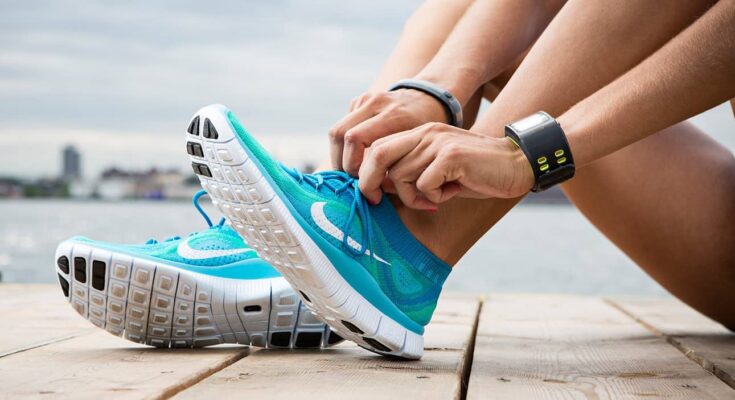Introduction to Athletic Footwear
The modern fitness enthusiast’s toolkit is complete, including athletic footwear engineered explicitly for their activities. The significance of finding the perfect pair, such as options from New Balance, goes beyond the external appearance. It encompasses elements that impact physical performance, provide necessary support, and safeguard the athlete from injury. Athletic footwear has shifted from a protective necessity to a sophisticated tool that could enhance one’s athletic prowess and endurance.
The past few decades have witnessed a profound change in how we perceive athletic shoes. By meticulously marrying form with function, these modern marvels offer athletes the edge needed in competitive and recreational activities. Scientific research has bolstered this transformation, emphasizing the critical role of an appropriate pair of shoes in an athlete’s repertoire. Now seen as integral rather than supplementary, athletic shoes are pivotal to effective engagement in sports and promoting long-term wellness and fitness habits.
Analyzing Footwear Needs for Different Activities
Selecting the correct footwear is paramount and varies significantly across different sports and activities. Running, for instance, is a high-impact activity that necessitates a shoe capable of absorbing substantial shock while providing stability throughout the stride. With their advanced cushioning technology, online retailers running shoes serve this purpose well, enabling runners to excel without jeopardizing their comfort or safety. On the contrary, court sports such as basketball or tennis require footwear designed to focus on lateral support, flexibility, and surface grip to handle these sports’ quick, multidirectional movements.
A more versatile shoe is necessary for those engaging in gym workouts or cross-training. A cross-trainer is designed to handle a range of movements, offering a balance between various performance features. These shoes typically provide moderate cushioning, supportive uppers, and a durable outsole suitable for multiple gym activities. In specialized sports like soccer or golf, footwear is even more niche-specific. Soccer shoes include cleats for grip on the field, while golf shoes need more grounded support to aid stability during the swing. Each sport or fitness activity has footwear designed to enhance the performance and safety of the participant.
Understanding Shoe Technology and Materials
Recently, innovative shoe technology and material advancement have been observed. The footwear industry is constantly pushing the envelope to improve athlete performance and comfort through revolutionary designs. Responsive cushioning systems that bounce back upon impact, adaptive fit technologies that mold to the individual’s foot shape, and breathable fabrics that cater to foot hygiene and comfort are just some examples of the progress made in shoe construction.
One must remember the significance of materials in athletic shoe function, too. Advanced composites, memory foam, thermoplastic urethane (TPU), and ethylene-vinyl acetate (EVA) are engineered to provide an optimal mix of durability, weight, comfort, and flexibility. Not only does the choice of materials affect the performance characteristics, but they also influence the longevity and overall health impact on the wearer’s feet.
Choosing the Right Fit
The adage “one size fits all” does not apply to athletic shoes. A secure, snug fit ensures optimal performance and reduces injury risk. One should factor in the peculiarities of their feet, acknowledging aspects such as width, arch type, and pronation. Sizing should be precise, considering the foot’s natural expansion under the stress and temperature of a workout or activity. Nevertheless, comfort remains paramount and should be the deciding factor, even after considering all measurements and suggestions.
Impact of Footwear on Athletic Performance
The relationship between well-suited athletic footwear and enhanced performance cannot be overstated. An athlete’s choice of shoes can profoundly affect their running efficiency, agility on the court, or even power during a lift. Compelling evidence is found in a pivotal study, which provides insights into the measurable benefits proper footwear can have on an athlete’s output. These findings help athletes and fitness enthusiasts focus not just on the exercise but also on the equipment that could support their endeavors.
Athletic Footwear and Injury Prevention
A well-engineered pair of athletic shoes serves as the first line of defense against common sports-related injuries. Quality shoes support the foot’s arch, stabilize the ankle, and absorb repetitive impact. This stability is crucial in avoiding accidental sprains, chronic pain, or more severe stress-induced injuries. Additionally, a shoe with appropriate traction can prevent falls and slips during activity, making it a non-negotiable component of an athlete’s gear.
The Lifecycle of Athletic Shoes
The effectiveness of athletic shoes is not timeless; they wear down regularly, gradually losing support and protective functionality. Therefore, replacing them at the correct interval is as essential as choosing the right pair. As a benchmark, running shoes should be considered for replacement every 300 to 500 miles, depending on running style and shoe quality. However, the best indicator is the condition of the shoe itself. If there are visible signs of uneven tread wear, damage to the midsole, or a general sense of reduced cushioning, it may be time to seek a new pair.
Maintenance and Care of Athletic Footwear
Proper maintenance is vital in extending the life of athletic shoes. Regular cleaning to remove dirt and sweat can slow down the degradation of materials. Storing shoes in a cool, dry place prevents the breakdown of adhesives and foam materials that provide structure and cushioning. Moreover, alternating between pairs for different activities or rest days can alleviate the compression of cushioning materials, thus prolonging their performance.
Conclusion: Making An Informed Choice
As the link between athletic footwear and fitness outcomes strengthens, so does the responsibility to make informed selections. Understanding the dynamic interplay of technology, design, and personal biomechanics allows for better decisions that enhance an athlete’s performance and protect their greatest asset—their body. To achieve athletic aspirations, one must ensure that the footwear they choose is not an afterthought but a cornerstone of their athletic routine.




